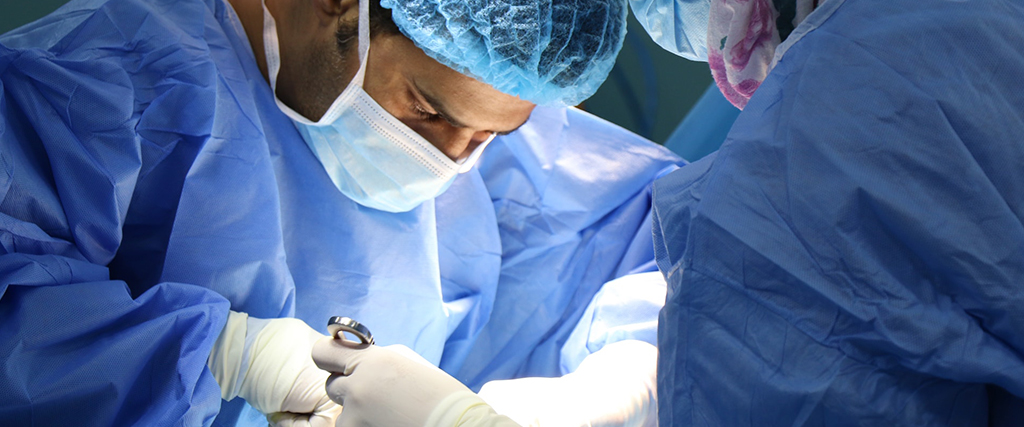Reconstructive Urology
Reconstructive urology is a specialized branch of urology that focuses on restoring the structure and function of the urinary tract and genital organs. It involves surgical procedures aimed at repairing or reconstructing abnormalities, defects, or damage that affect the urinary system in both men and women. The goal is to improve urinary function, alleviate symptoms, and enhance the overall quality of life for patients.
Reconstructive urology encompasses a wide range of conditions and procedures. Some common examples include urethral stricture repair, where narrowed sections of the urethra are surgically corrected to restore normal urine flow; genital reconstruction to address congenital abnormalities or acquired conditions affecting the male or female genitalia; and pelvic organ prolapse repair, which involves restoring proper organ positioning in women.
These procedures often require advanced surgical techniques, including tissue grafting, reconstructive flaps, or the use of prosthetic devices. Reconstructive urologists work closely with other specialists, such as gynecologists, plastic surgeons, or colorectal surgeons, to provide comprehensive care for patients with complex urological conditions.
Reconstructive urology aims to improve patients’ urinary and sexual function, enhance their self-esteem and overall well-being, and enable them to lead fulfilling lives free from the limitations imposed by urological abnormalities or dysfunctions.
Dr. Sandip Pramanik Specialises in
- BMG Urethroplasty – BMG (Buccal Mucosal Graft) Urethroplasty is a reconstructive surgical procedure used to treat urethral strictures. It involves taking a graft of tissue from the inner cheek (buccal mucosa) and using it to replace the narrowed section of the urethra, restoring normal urine flow and improving urinary function.
- Hypospadias Repair – Hypospadias repair is a surgical procedure used to correct the congenital condition where the opening of the urethra in males is located on the underside of the penis. The surgery involves repositioning the urethral opening to the tip of the penis, restoring normal anatomy and urinary function.
- Anastomotic Urethroplasty – Anastomotic urethroplasty is a surgical procedure performed to treat urethral strictures. It involves surgically reconnecting the two healthy ends of the urethra, eliminating the narrowed or scarred section. This procedure aims to restore normal urine flow and improve urinary function by creating a wide, unobstructed passage in the urethra.
- Surgery for Pelvic Fracture Urethral Distraction Defect – Surgery for Pelvic Fracture Urethral Distraction Defect involves reconstructing the urethra after a pelvic fracture injury, typically using tissue grafts or other techniques to repair the urethral damage and restore normal urinary function.
- Vesico Vaginal Fistula Repair (Laparoscopic or Open) – Vesico-vaginal fistula repair is a surgical procedure aimed at closing an abnormal connection between the bladder and vagina, typically caused by childbirth trauma, injury, or previous surgeries. The repair aims to restores normal urinary and vaginal function.
- Laparoscopic or Open Ureteric Reimplantation (for Uretero Vaginal Fistula) – It is a surgical procedure that involves repositioning and reconnecting the affected ureter to the bladder to repair the abnormal connection between the ureter and vagina, restoring normal urinary flow.
- Laparoscopic or Open Pyeloplasty (for PUJ Obstruction) – Pyeloplasty is a surgical procedure performed to treat ureteropelvic junction (UPJ) obstruction. It involves removing the narrowed or blocked portion of the ureter and reconstructing it to restore proper urine flow from the kidney to the bladder.
- Surgery for Retrocaval Ureter – Surgery for retrocaval ureter, also known as ureteroureterostomy or ureterolysis, involves rerouting or releasing the ureter that is compressed or obstructed by the vena cava, restoring normal urine flow and relieving symptoms.
- Perineal Urethrostomy – It is a surgical procedure in which a new opening is created in the perineum, allowing urine to bypass a urethral obstruction and exit through the newly formed opening.
- Circumcision – It is a surgical procedure that involves the removal of the foreskin to address certain medical conditions such as recurrent infections, phimosis, or other urological indications.

